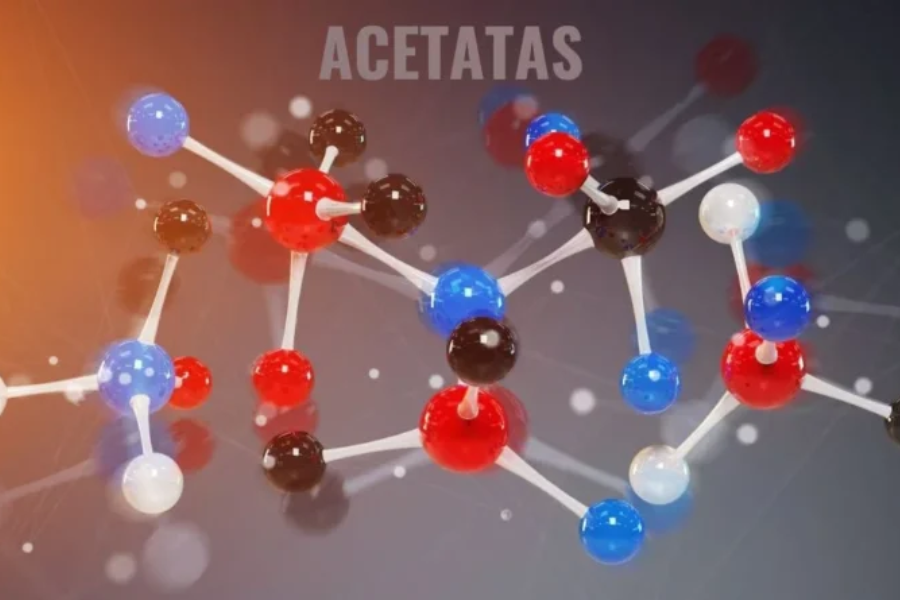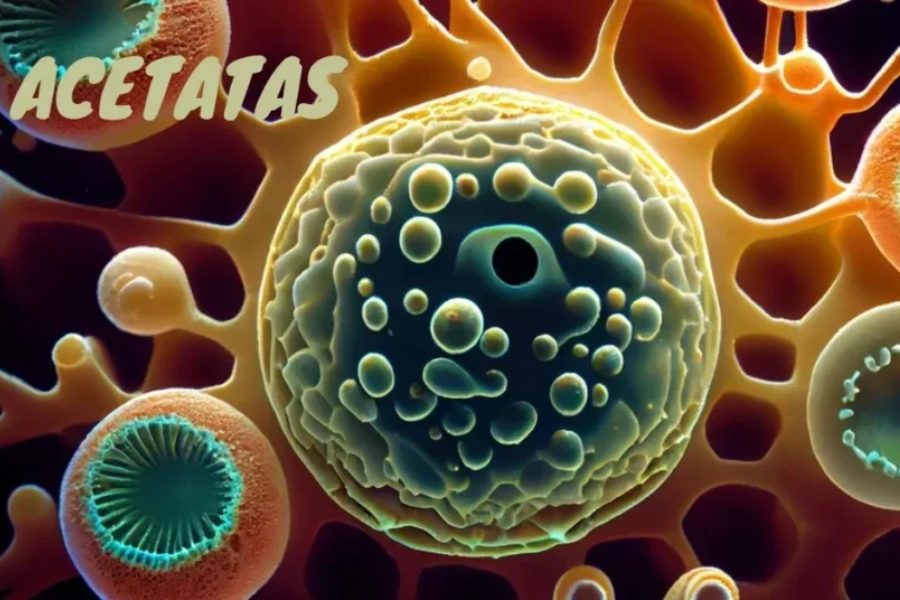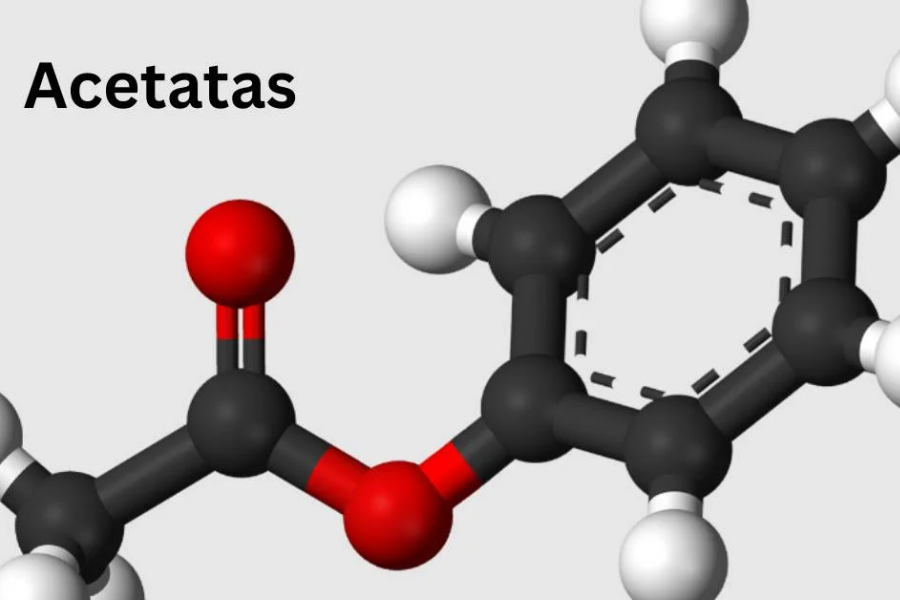In the realm of chemical compounds, acetates stand out for their exceptional versatility and significant impact. These dynamic substances play crucial roles across various industries, including fashion, textiles, pharmaceuticals, and food production. Their unique properties make acetates essential not only as fundamental components in manufacturing but also as key ingredients in products that simplify and enhance our daily lives.
This article explores the diverse applications of acetates, delves into the underlying science, and highlights why these compounds are so highly valued across different sectors. Whether you are a professional in the field or just interested in how these substances influence the world around us, you will find a detailed and accessible overview of acetates and their importance here.
What Are Acetates?
Acetates, fundamentally, are salts or esters derived from acetic acid. This basic chemical relationship bestows acetates with a range of properties that make them invaluable across numerous industries. Present in both natural and synthetic forms, acetates are integral to fields such as pharmaceuticals, food preservation, and textile manufacturing.
The Science Behind Acetates
To fully appreciate the versatility of acetates, it’s essential to understand their underlying science. Acetic acid, which is a weak acid commonly found in vinegar, is the core component of acetates. When acetic acid interacts with a base, it forms acetate compounds through a chemical reaction. This process results in various types of acetates, each with distinct properties tailored to specific applications.
For instance, ethyl acetate is frequently employed as a solvent in nail polish removers and in the production of paints and coatings due to its effective dissolving capabilities. Meanwhile, sodium acetate is commonly used as a food preservative to enhance the flavor and extend the shelf life of packaged products. Each type of acetate serves a unique role, underscoring their broad utility across different sectors.
Common Uses of Acetates

- Pharmaceutical Industry
- Sodium Acetate: In medical settings, sodium acetate is primarily utilized to replenish electrolytes. Administered intravenously, it helps address low sodium levels in patients. Additionally, it functions as a buffering agent in various pharmaceuticals, stabilizing medications and maintaining their pH balance.
- Acetate Esters: Acetate esters, such as ethyl acetate, are vital solvents in pharmaceutical manufacturing. They play a crucial role in extracting and purifying active pharmaceutical ingredients (APIs), which ensures the quality and safety of medications.
- Textile Industry
- Cellulose Acetate: A notable application of acetates in textiles is the creation of cellulose acetate fibers. These fibers are prized for their silky texture and are commonly used in clothing, linings, and home decor. Cellulose acetate is favored for its aesthetic qualities, comfort, and durability, making it a preferred material in the fashion and interior design sectors.
- Food Industry
- Sodium Acetate: In food processing, sodium acetate serves as both a preservative and a flavor enhancer. It extends the shelf life of food products by preventing bacterial and fungal growth. Sodium acetate is frequently used in snack foods, such as potato chips, where it enhances taste and acts as a seasoning component.
- Industrial Applications
- Acetate Esters: Solvents like ethyl acetate and butyl acetate are extensively used in industrial applications, including paints, coatings, adhesives, and inks. These esters effectively dissolve other substances, aiding in the application and drying processes of these products. Their solvent properties make them essential in manufacturing and construction.
- Cosmetics
- Ethyl Acetate: In the realm of cosmetics, ethyl acetate is a common ingredient in nail polish removers. It effectively dissolves nail polish without overly drying or damaging the nails. Ethyl acetate’s balanced efficacy and mild nature make it a favored component in personal care products.
Applications Of Acetates
Textile Industry
Acetates are pivotal in the creation of cellulose acetate fibers, which are extensively used in producing fabrics, clothing, and home textiles. These fibers are renowned for their luxurious, silk-like finish, durability, and easy maintenance, making them a popular choice in the textile sector.
Pharmaceuticals
In the pharmaceutical field, acetates serve crucial roles, including acting as buffer solutions to stabilize pH levels in various medications. They are also involved in the synthesis of certain drugs and may be an active ingredient in some pharmaceutical products.
Food Industry
Sodium acetate, a prevalent form of acetate, functions as both a preservative and flavor enhancer in the food industry. It helps improve the taste of foods and prolongs their shelf life by inhibiting microbial growth.
Plastics and Polymers
In the realm of plastics, acetates are integral to the production of cellulose acetate, a plastic used in manufacturing films, coatings, and eyeglass frames. This material is appreciated for its clarity, strength, and environmental friendliness due to its biodegradability.
Photography
Acetates are essential in the photographic industry, particularly in the production of photographic films and emulsions. They are used to form a stable and durable base for capturing images, ensuring the longevity and quality of photographic materials.
Benefits Of Using Acetates

- Versatility: Acetates are employed across a broad spectrum of industries, from textiles to pharmaceuticals, underscoring their wide-ranging utility.
- Stability: The chemical stability of acetates contributes to their effectiveness and reliability in various applications.
- Solubility: Their ability to dissolve in both water and organic solvents enhances their applicability in numerous industrial processes.
- Biodegradability: Certain types of acetates, like cellulose acetate, are biodegradable, offering environmentally sustainable options.
Environmental And Health Considerations
Environmental Impact
The manufacturing and application of acetates, while beneficial, do present environmental challenges. The production process often involves hazardous chemicals and can result in waste generation, making effective waste management and pollution control crucial. Additionally, proper disposal of acetate-containing products is essential to prevent environmental contamination and reduce ecological footprints.
Health Considerations
Exposure to acetates, particularly in concentrated forms, can pose health risks. Industrial handling of these compounds may lead to respiratory issues or skin irritation if appropriate safety measures are not observed. It is vital for individuals working with acetates to adhere to safety protocols and use protective gear to mitigate potential health hazards.
Innovations And Future Prospects
1. Green Chemistry
In response to environmental concerns, research is focusing on greener production methods for acetates. This involves minimizing the use of hazardous substances and enhancing the sustainability of manufacturing processes. Innovations include developing alternative catalysts and utilizing renewable raw materials for acetate production.
2. Advanced Materials
The field of materials science is seeing advancements in acetate-based materials with improved properties. Efforts are being made to create new biodegradable acetate forms that could help mitigate plastic waste and lessen environmental impact.
3. Enhanced Drug Formulations
In pharmaceuticals, there is ongoing research into using acetates to refine drug formulations. Scientists are investigating novel ways to leverage acetates for controlled drug release and enhanced therapeutic efficacy, aiming to improve treatment outcomes and patient safety.
Diverse Applications Of Acetates
Acetates play a pivotal role across various sectors, significantly enhancing the quality and functionality of numerous products. Below are some key applications of acetates:
1. Fashion and Textiles
In the fashion industry, acetates, particularly cellulose acetate fibers, are highly valued. These fibers are renowned for their luxurious, silk-like texture, making them ideal for high-end garments and accessories. Cellulose acetate is also appreciated for being hypoallergenic, which is beneficial for those with sensitive skin. Additionally, these fibers are utilized in crafting durable, lightweight eyeglass frames that offer both style and resilience.
2. Pharmaceuticals
In pharmaceuticals, acetates are integral to the formulation of various medications. For instance, prednisone acetate is an effective anti-inflammatory used in treating conditions like asthma and autoimmune disorders. Acetates are crucial in stabilizing these active ingredients, ensuring their efficacy over time. They are also employed in creating sustained-release tablets, which release medication gradually, enhancing patient adherence and effectiveness.
3. Food Industry
Sodium acetate is a widely used additive in the food sector, known for its role in flavor enhancement and food preservation. It imparts a tangy taste to snacks like chips and extends the shelf life of various packaged foods by preventing microbial growth.
4. Industrial Applications
Acetates are indispensable in the industrial realm, where they serve as solvents and intermediates in chemical production. Ethyl acetate, for example, is a key solvent in the creation of paints, coatings, and adhesives. It is also used in producing synthetic leather and other materials requiring flexibility and durability. Furthermore, acetates contribute to the production of photographic film and printing inks, where they ensure image clarity and stability.
5. Environmental Impact
One of the notable benefits of acetates, especially cellulose acetate, is their potential for environmental sustainability. These acetate-based products are biodegradable, offering a more eco-friendly alternative to conventional plastics that linger in the environment for extended periods. Cellulose acetate, derived from renewable resources like wood pulp, aligns with the increasing demand for sustainable materials and helps reduce environmental impact.
The Significance Of Acetates

The value of acetates extends beyond their practical uses. They are crucial in improving the quality, safety, and environmental sustainability of products across various industries. For instance, in fashion, cellulose acetate fibers blend aesthetics with function, while in pharmaceuticals, acetates enhance medication effectiveness and longevity.
Moreover, the biodegradable nature of acetate-based materials presents a promising solution to the global issue of plastic pollution. As industries strive to adopt more sustainable practices, acetates are poised to play a more prominent role in shaping a greener future for manufacturing.
4o mini
FAQs about Acetates
1. What are acetates?
Acetates are salts or esters derived from acetic acid. They can be found in both natural and synthetic forms and are used in various industries due to their versatile properties.
2. How are acetates used in the textile industry?
In textiles, acetates, especially cellulose acetate fibers, are used to produce luxurious fabrics and clothing. These fibers are valued for their silk-like texture, durability, and hypoallergenic properties. They are also used in manufacturing lightweight and durable eyeglass frames.
3. What role do acetates play in pharmaceuticals?
Acetates are used in pharmaceuticals to stabilize active ingredients in medications and to produce sustained-release tablets that ensure controlled drug release. For example, prednisone acetate is used as an anti-inflammatory drug for various conditions.
4. How are acetates utilized in the food industry?
Sodium acetate is a common food additive that enhances flavor and extends the shelf life of packaged foods. It is used in products like chips to provide a tangy taste and to prevent bacterial and mold growth.
5. What are the environmental impacts of acetates?
While acetates are beneficial, their production can involve hazardous chemicals and generate waste. However, acetate-based products like cellulose acetate are biodegradable and offer a more eco-friendly alternative to traditional plastics.
6. Are there any health concerns associated with acetates?
High concentrations of acetates can pose health risks, such as respiratory or skin irritation. It is essential for workers to follow safety guidelines and use protective equipment when handling these substances.
7. What are some innovations in acetate technology?
Recent innovations include greener production methods using alternative catalysts and renewable feedstocks. Advances also involve developing biodegradable acetate-based materials and improving drug formulations for better therapeutic outcomes.
Conclusion
Acetates are remarkably versatile compounds with a wide range of applications across multiple industries, from fashion and textiles to pharmaceuticals and food production. Their unique properties make them invaluable for enhancing product quality, functionality, and sustainability. In textiles, acetates contribute to luxurious and hypoallergenic fabrics; in pharmaceuticals, they stabilize and enhance the efficacy of medications. In the food industry, they improve flavor and shelf life, while in industrial applications, they serve as essential solvents and intermediates.
Despite their advantages, the production and use of acetates come with environmental and health considerations. Efforts to develop greener production methods and biodegradable alternatives highlight the ongoing commitment to reducing their ecological footprint.
As industries continue to innovate, acetates are expected to play an even more significant role in shaping the future of manufacturing, offering solutions that are both effective and environmentally friendly.




